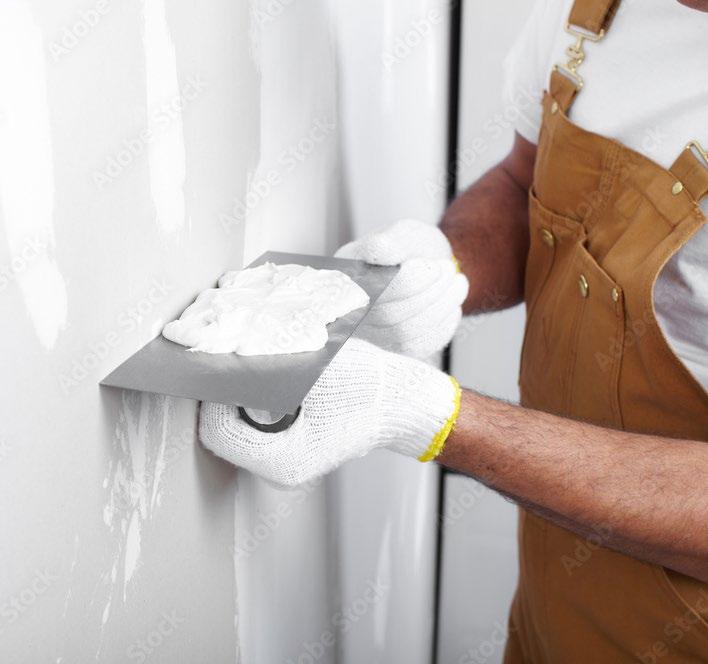
2 minute read
Plasterwork
Plaster Cracks
Depending on the prevailing climatic conditions it will take up to 12 months for your new house to settle into its new environment. Generally, this settlement will become evident as minor cracking to the inflexible internal junctions of walls and the intersection of cornices to both walls and ceilings. Because nothing can be done to prevent the house settling, these minor hairline cracks (less than 1mm wide) can be fixed one week and reappear the next. These hairline cracks are not covered by our warranty and are not considered defects.
Advertisement
Glancing Light on Internal Linings
Natural light from an un-curtained window or artificial light from an unshaded or poorly positioned light fitting can cast glancing light across both ceilings and walls. This glancing light will dramatically affect the appearance of a flat ceiling or wall in your home.
Imperfections in plaster that are only evident at certain times of the day, from a particular angle or at night are not considered defects and are not covered by our warranty.
Great care is taken during the installation and finishing of the plasterboard linings In your home, but the end result — no matter how skilled the tradesman — is an approximation of flatness. “A surface which is perfectly flat under diffuse light can appear rough and uneven when lit by light falling nearly parallel to the surface” — CSIRO (Report no. 8 ‘Illumination and decoration of flat surfaces’.)
Plaster Ceilings
Consideration is required when undertaking the installation of any light fittings, fans or similar to the plaster ceiling linings. In the event of any electrical or plumbing fitting this is required to be installed by a licensed contractor. All fittings irrespective of size and weight should be installed with an appropriate support system within the limit of the structural framing system of your home. Plaster is not designed nor intended to provide direct support and may result in the failure of your ceiling system. The roof cavity above your plaster ceiling linings is not designed, nor should it be used, for storage.
Considerable care should be taken when any access is made to the roof cavity as the plaster ceiling linings are not designed to withstand the weight of rested objects or foot traffic, such force may compromise the plaster board fixing system and lead to ceiling failure.
Caring for your walls
For the best results, it is advisable to wash the whole wall rather than simply the area that has been stained. This applies particularly with ceilings where, for aesthetic reasons, they have been painted with flat ceiling paint. So, extra care should be taken when washing ceilings since hard rubbing will tend to “polish” the surface and cause shiny spots that will mar the overall finish.
Similarly, care should be taken with walls. Use diluted detergent solution by adding a tablespoon of household detergent to four litres of warm water. Apply with a soft cloth or sponge to avoid marking the surface. Always rinse off detergents with clean water and pat the surface dry to avoid leaving a spotty appearance.
Never use an abrasive cleaner.
REFERENCE DOCUMENTS
— Contract specifications. — CSIRO, Report no.8 – Illumination and decoration of flat surfaces. — gyprock.com.au
IMPORTANT NOTE
At the first sign of any water staining or unusual cracking appropriate investigations need to be undertaken to ensure the ceiling system is not compromised.










